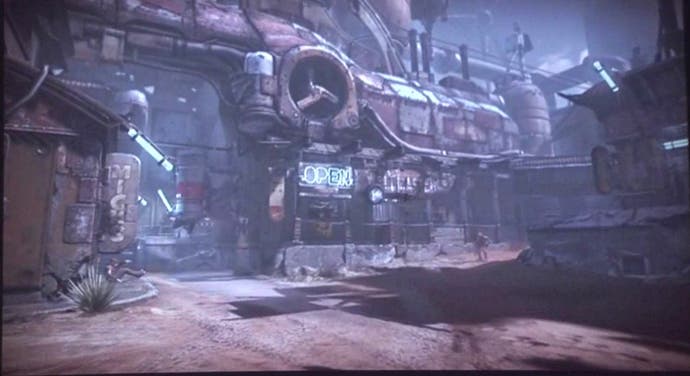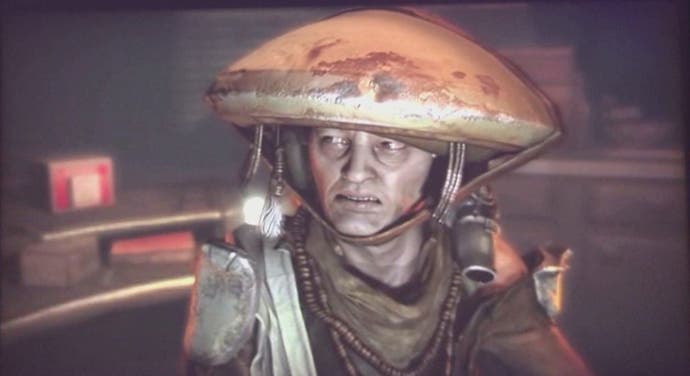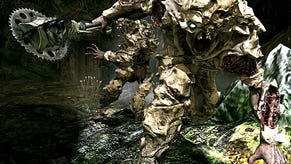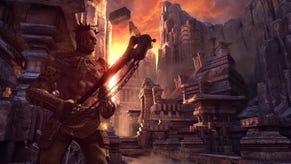id Software's Steve Nix
On Rage, Quake Zero, Wii and more.
Following on from last week's chat about the merits of id Tech 5, here's the second part of our QuakeCon interview with Steve Nix, touching on Rage, Quake Zero's development and the growth of team two, id's relationships with Nintendo and Sony and how they see themselves - as a tech developer or a game developer.
We haven't actually made any kind of publishing announcement for Rage, but historically we've had a great relationship with Activision - they've been the publisher of many of our recent games, but the way it works out is that we don't do long-term publishing deals, so every time we go to choose a publisher for our next title, it's always a new conversation. We'll go out and talk to the top candidates and talk about what their offer might be, and every time it's a new discussion. We generally self-fund our own projects and that's what we're doing right now with Rage and so we haven't made any kind of decision there.
Activision - we've shipped a lot of games with them, and they've done a good job over the years, but I honestly don't know who the next publisher's going to be.

We're not exactly sure when Rage is going to be finished, but we've got enough time where we can sort that out, because we don't even know who our publisher's going to be yet. So that would all be part of that discussion and what digital distribution platforms it might go to is completely undecided.
It's interesting - it's not really delegated away, it's just that we have tools now [laughs]. Clearly our internal developers were looking for certain tools, and licensees are looking for a strong suite of tools these days, and so for this round of technology we needed to hire tools programmers and needed to have the best tools available for both internal and external developers. It's not so much that John's being pulled away because John primarily will write the core rendering and that's still what he's doing - we just have more parts of the engine that are being developed by other engineers.

With Quake Zero, the foundation there is Quake 3, but what we're doing is we have an internal team - a second team - that's seeded with people who are id veterans, and then we're hiring the best and the brightest minds to join that team, making sure that they're id quality, and also that they have the id state of mind about the way they work, and we're being very careful about who we choose, but generally it's not difficult for us to hire because a lot of people want to come work for id.
We're building that team up and as far as the technology goes it's Quake 3, but it's modified to have a front-end in a web-browser where you launch the game. And they've already done a lot of the architectural work - the way the game loads - where it's primarily just shifting the file structures and everything, but the game loads very very quickly, so basically you've never played it on a given machine, you can go to the web-browser, click 'play' and almost instantly get into a game.
Though it is loading to your machine in the background, there's not going to be a lot of wait time or an install process and everything. The idea is people can quickly jump into a game - you know, they change computers at work and they want to jump in, there's not a lot of wait time and messing around with installing and loading and those typical PC headaches. But that's primarily the web front-end and file structure and loading and everything - that's where a lot of the work is.
We're going to do some enhancements, but we're not rewriting the game trying to bring it up to id Tech 5 quality or anything.
Well it'll be launched from a web browser. It's not going to be written in Java or really running in the web browser.
Right [laughs], that's not going to happen.
Right now there's been no discussion of trying to license out. There may be someone who's interested and we license to them, and actually that's interesting because we haven't even talked about that.
And then that [Zero] rolls into what we're planning to do with the next Arena that John mentioned. That's obviously going to be next next-generation, as what we like to refer to id Tech 5 as - it's really beyond what's currently described as next-generation. It's going to be id Tech 5 level quality rendering, but as far as what the guts of the game-code area, that's a discussion we're still having - you know, are we going to try and have literally the game code from Quake 3 as a foundation? Because people really really liked the movement speed and the way Quake 3 just feels, and a lot of that's low-level kernel code - so we do we start with that and do id Tech 5 rendering? That's something we're discussing right now. But that'll be decided as the team develops Quake Zero and we get closer to releasing that product.

Graphically we think we'll be bleeding edge, because we think we're going to have the best-looking games possible with id Tech 5, but what he means by not really cutting edge is we're not going to be just hammering all of the parts of your computer like we would have previously been, just because the way that the MegaTexture approach works is so unique in that it really doesn't hammer your video memory the way a previous id title would have done.
So it's cutting edge yes, but not quite as hardware-resource-intensive particularly when it comes to video memory. But at the same time, you still benefit from a strong GPU, there's a lot of stuff with the way virtual textures load - there's less of a chance that you'll get a block that's slightly lower fidelity - so if you want the highest fidelity version of the game and absolutely want to make sure it's cutting-edge-perfect all the time, you want the strongest video card possible, and that'll remain the same.









